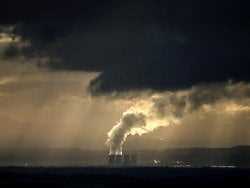Saturday, January 08, 2022
Many power plants failed
Nuclear reactors leave the French in the lurch in winter
Nuclear energy is praised by its proponents as – in contrast to solar and wind power plants – a reliable, weather-independent electricity supplier. In France, the picture is currently very different. Industrial companies and households must fear a cold spell.
Nuclear power? Oui merci! – that is the motto of the French government to reduce climate-damaging CO2 emissions. In Brussels, France is campaigning for nuclear power to be classified as sustainable in order to attract investors. The French atomic park is causing a lot of problems – from current supply problems to a lack of a strategy for renewal.
How are the nuclear power plants operating?
Since the shutdown of the nuclear power plant in Fessenheim in 2020, France has 56 reactors at 18 locations. They produce almost 70 percent of the energy – more than in any other country. In the past few weeks, however, up to 17 reactors were shut down at the same time. Most of the time it was scheduled maintenance. Some interventions were delayed because of the pandemic.
Since October, four of the most powerful reactors in France have also been shut down for safety reasons. Two of them are in Chooz near the Belgian border, the other two in Civeaux in western France. The operator EDF reported cracks in welds and problems with corrosion.
The shutdown of the reactors meant that in January the nuclear power plants only produced between 43 and 51 gigawatts instead of 60 gigawatts – and that in winter, of all places, when the electric heating alone requires around 30 gigawatts. The network operator RTE has already warned that in the event of a cold spell, industrial plants have to be shut down or that there could be hourly power outages in private households.
France wants to reduce the share of nuclear energy to 50 percent by 2035. This means that the reactors that are still running are on average 50 years old. The nuclear supervisory authority has already approved an extension of the operating times for some of the reactors from 40 to 50 years with conditions. The Court of Auditors urges France to adopt a long-term strategy to modernize electricity production. The agency estimates that this would cost several hundred billion.
How far is the construction of the EPR reactor in Flamanville?
The European Pressurized Water Reactor (EPR), which Siemens was initially involved in developing, was to become the prestige project of the French nuclear industry. But then the costs rose from 3.3 to more than 19 billion euros, and the reactor is not due to go online until 2023, eleven years later. There have been several technical problems. Among other things, around a hundred welds still need to be repaired.
An EPR reactor has been running in Finland since December, the construction of which had also been massively delayed and made more expensive. In China, on the other hand, one of the first two EPR reactors commissioned was taken offline in the summer due to a technical problem.
Where does France store its nuclear waste?
A large part of the French nuclear waste is stored in the reprocessing plant in La Hague. The storage basin could be full by 2030, and another basin is being planned. In the Lorraine town of Bure, the prototype of a repository is located 500 meters below the surface of the earth. However, it is only a “laboratory”. The expansion to a repository has not yet been approved.
What is Emmanuel Macron’s nuclear strategy?
Macron describes nuclear power as a “stroke of luck” for France and refers to its good CO2 balance. He has promised one billion euros to invest in nuclear power and the construction of new reactors. So far he has not decided on the type of new reactors. EDF has already considered building six more EPR reactors. The Court of Auditors assumes a construction time of 15 years per reactor. Research is also being carried out on new mini-reactors (SMR), which, however, are more intended for export and should not be operational until 2035 at the earliest.
